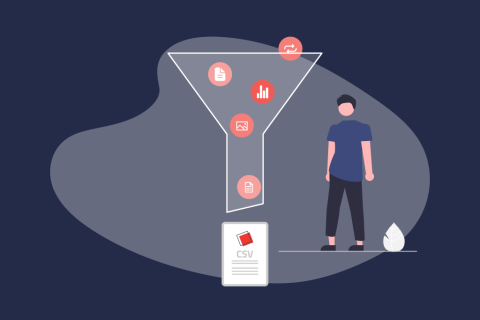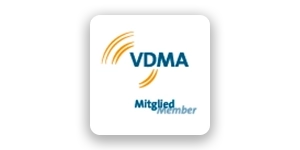Product Communications
Translation Management at the Click of a Button

Content
This is how you keep your product data in shape for your company’s international expansion
Online retail knows no limits. So, why limit yourself to a market that may already be oversaturated? International expansion in online retail seems to be more convenient than ever in the times of globalization and digitalization. However, it’s not that easy after all. The provision of one’s own product on the international markets poses a challenge to any company – in particular when it comes to Product Communication. In our whitepaper, we provide a clear-cut analysis of all challenges involved and give concrete guidance on how to master them. Download the whitepaper, “Localized Content is King”, and turn your Translation Management into a success across the board.
We know that customers value detailed and personalized product descriptions highly. Yet, it’s more than just that: Search engines on the internet only find well-described products which, in turn, result in more sales. What does this mean for Translation Management? For starters, did you know that there are markets for 150 to 200 languages in Europe alone? On a global scale, there are markets for 6.500 languages. To companies, playing the global market means that product content is to be exported into the relevant regional languages. The magic word is: Content Localization. The reason for this is that 81 percent of all customers want product descriptions written in their mother tongue. Or to phrase it the other way around: When was the last time you’ve bought a product with a description which you couldn’t understand because it was written in a foreign language?
Besides languages, the socio-demographic context is also of utmost importance. With regards to this, you should clearly define which products of your assortment are to be provided in which countries. Just because a product generates a lot of sales in France doesn’t mean it will enjoy the same relevance in, for example, Russia. Your target group also differs from country to country and market to market so that you’re required to adjust the information provided in the relevant communication channels accordingly.
Assortments: Specific combination of products or services.
Persona: Buyer personas and target groups may deviate from your primary markets.
Channels: When in Rome, do as the Romans do – this applies to each and every communication channel!
Languages: You do not only need to understand your customers, you also need to address them accordingly.
Managing all this manually is flat-out impossible. Here is where the right tools and software systems can come in handy, supporting your company in its Translation Management.
❓ What is Translation Management?
Translation Management is the planning and control of entire translation processes from start to finish. To automate such processes, it is common practice in today’s industries to use so-called Translation Management Systems (TMS) – in the context of product data, these tools are supported by Product Information Management systems (PIM).
PIM – the foundation for successful Translation Management concerning your products
The centralized management of all your product data is the most important requirement when it comes to pushing your Translation Management forward. With PIM, all your product data and texts can be searched, edited, and processed in and through one and the same system. If your product data is spread over several data sources (such as Excel tables, PDF documents, or even across different departments), you’ll face many risks. Nobody can guarantee that the data is complete, up to date, and correct. The consequence: High translation costs, product content which doesn’t adequately address the target group, false product information, outdated product descriptions – and, ultimately, a negative impact on the Customer Experience.
When equipped with a PIM system, such problems can be easily avoided. If all data is managed in a central but also dynamic system, technical writers, translators, editors, and product managers are provided with quick and easy access to everything they need for their individual use cases. On top of that, it also fosters collaboration. This Single Source of Truth guarantees for consistent data without redundancy, while exports and imports of both to-be-translated and translated product information can be generated at the click of a button.
Yet, even with a PIM system, there still remain many challenges when it comes to the optimization of your Translation Management. In order to master it, you should expand your PIM via integration of a Translation Memory System such as Across or SDL Trados.
Translation Management Systems: The optimal support for your Product Communication
By integrating your Translation Memory System into your PIM software, you can create translation tasks and automatically forward them to all relevant people in response. Translation tasks mediate between all parties involved: you and your team, those in charge of the overall translation project, the translators or external translation agencies, as well as the marketing, creative writers, and editors. This comes with a great many benefits:
- Save time and cut costs thanks to TMS
- Increase data security because everybody works within one and the same system without any loose ends
- Use consistent terminology to build a stable Corporate Identity
- Always adjust to individual use cases with context-based translations
- Automate quality assurance
- Organize clean-cut digital translation processes and workflows
With an integrated TMS, you only translate what needs to be translated. This allows you to reduce time and cost invested for in-house or external translators. How exactly do Translation Memory Systems come into play? Translated segments are saved into you Translation Memory database. Thus, reoccurring terminology or similar phrases and sentences in new content can be easily identified in a fully automated manner. This, in turn, translates – pun intended – into a recognizable wording, tonality, and Corporate Identity. Furthermore, predefined terminology and suggestions of existing translations allow for automated quality control and, accordingly, an immediate improvement of translation quality.
💡 eggheads Insider Tip:
Define quality criteria well ahead of time for both your source texts and translations, and forward them to all people involved in the form of a concise guideline. Do texts have a specific character limit? For which use case do you need marketing texts and for which use case do you need technical texts? In the eggheads PIM, such criteria are analyzed and validated automatically when changing the status of a project to the next workflow status (e.g. when changing the status of a technical text to translation-ready): Only if the validation process is successful, the status change is granted so that the project can be automatically forwarded to the people in response. At the click of a button, in this case for the status change, you avoid the problem of incomplete or wrong product descriptions before it even comes up in the first place – concerning both, the quality of your source text and translated target text.
With localized content, your international expansion is on the course for further success
To be successful in the global world of online retail not only regionally but on an international scale, localized product content is an absolute must-have. Only in this way can you assure that you meet your customers at all touchpoints while also presenting your products in the best possible light. Using only manual means to keep your entire product content for all global markets in shape is no less than a Sisyphus’ labor. This is why there is suitable software with helpful features to support you in digitalizing the translation process and automating its repetitive aspects. Yet, even with the best software tools, there still remain a great many challenges for every and any company. This is why we’re always more than happy to support companies like yours in person when it comes to solving these challenges in an optimal manner. How about we discuss the challenges your company is facing over a virtual cup of tea so that we can work on the right solution together? Simply fill out this contact form and one of our eggheads product experts will get in touch with you asap – individualized discussions, without any commitments on your end.
💡 eggheads Insider Tip:
eggheads Suite features a direct connection to the DeepL machine translation tool as well as a direct interface to Across Language Server.
From Our Blog
You may also be interested in the following articles







